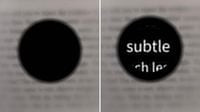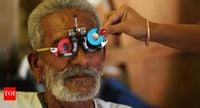For millions of people worldwide living with the devastating effects of dry age-related macular degeneration (AMD), a new era of hope has dawned. On October 20, 2025, researchers from leading institutions across Europe and the United States announced a groundbreaking clinical trial result: a tiny electronic eye implant, paired with high-tech glasses, has restored reading vision to patients who had lost their central sight to geographic atrophy—a form of AMD previously considered untreatable.
The clinical trial, whose results were published in The New England Journal of Medicine, involved 38 participants across 17 hospital sites in five countries, including the United Kingdom, France, Italy, and the Netherlands. According to UCL, 84% of those treated with the so-called PRIMA System regained the ability to read letters, numbers, and words through eyes that had previously gone dark. "Getting back the ability to read is a major improvement in their quality of life, lifts their mood and helps to restore their confidence and independence," said Mr. Mahi Muqit, associate professor at the UCL Institute of Ophthalmology and senior vitreoretinal consultant at Moorfields Eye Hospital, who led the UK arm of the trial.
The PRIMA System is a marvel of modern neurotechnology. At its heart is an ultra-thin, wireless microchip just 2mm x 2mm in size—about the dimensions of a SIM card and half the thickness of a human hair. Surgeons implant this chip under the retina in a procedure called vitrectomy, which can be performed in under two hours by trained vitreoretinal specialists. Once the chip is in place, patients wear augmented-reality glasses equipped with a video camera. The camera captures the visual scene, which is processed by a small computer attached to the patient's waistband. The system converts images into near-infrared beams that are projected directly onto the chip.
This is where the magic happens. The chip, acting like a miniature solar panel, converts the infrared signals into electrical impulses. These impulses stimulate surviving retinal neurons, which then transmit the information to the brain via the optic nerve. The result is the restoration of form vision—patients can once again perceive shapes, patterns, and, crucially, text. "All previous attempts to provide vision with prosthetic devices resulted in basically light sensitivity, not really form vision," explained Dr. Daniel Palanker, professor of ophthalmology at Stanford Medicine and co-senior author of the study. "We are the first to provide form vision."
Patients do not simply "see" the moment the device is switched on. As Mr. Muqit emphasized, "The rehabilitation process is key to these devices. It’s not like you’re popping a chip in the eye and then you can see again. You need to learn to use this type of vision." Participants underwent months of intensive training to interpret the new signals and start reading again. The effort paid off: on average, patients could read five lines on a standard vision chart—some of whom had been unable to see the chart at all before surgery. According to Stanford Medicine, 27 out of 32 patients who completed the one-year trial regained the ability to read, and 26 demonstrated a clinically meaningful improvement in visual acuity. In one remarkable case, a participant improved by 12 lines on the chart.
What makes the PRIMA approach uniquely effective is its ability to work with the eye’s remaining natural capacity. Dry AMD destroys the photoreceptors in the macula, the central part of the retina responsible for sharp vision, but often leaves peripheral vision and the underlying retinal neurons intact. The PRIMA chip is implanted precisely where photoreceptors have been lost, while the glasses project information only to that area using infrared light, which is invisible to surviving photoreceptors. This means patients can use their natural peripheral vision alongside the prosthetic central vision, merging both to navigate and interact with the world more fully.
The technology is not without its limitations. As of now, the device provides only black-and-white vision, though software enabling grayscale is in development. The current chip contains 378 pixels, each 100 microns wide, but next-generation versions—already tested in animal models—may have pixels as small as 20 microns and up to 10,000 pixels per chip. Dr. Palanker is optimistic: "A chip with 20-micron pixels could give a patient 20/80 vision. But with electronic zoom, they could get close to 20/20." The glasses already allow users to magnify images up to 12 times and adjust contrast and brightness, making tasks like reading books, food labels, or subway signs much more accessible.
Importantly, the trial found no significant decline in patients’ existing peripheral vision, and most side effects—such as ocular hypertension, tears in the peripheral retina, or subretinal hemorrhage—were mild and resolved within two months. Nineteen participants experienced such events, but none were life-threatening. Two-thirds of users reported medium to high satisfaction with the device, and many described a renewed sense of independence. One participant, Sheila Irvine, shared, "It’s made a big difference. Reading takes you into another world, I’m definitely more optimistic now." She recounted the emotional moment when she first began seeing letters again, and how the device has enabled her to tackle everyday challenges like reading prescriptions or doing crosswords.
Behind this achievement stands a global network of collaboration. The trial was led internationally by Dr. Frank Holz of the University of Bonn, with contributions from institutions such as Stanford Medicine, the University of Pittsburgh School of Medicine, and Moorfields Eye Hospital. The device itself is being developed by Science Corporation, a company specializing in brain-computer interfaces and neural engineering. Funding came from Science Corp., the National Institute for Health and Care Research, and several leading academic centers.
For now, the PRIMA System is a lifeline for those with geographic atrophy due to dry AMD, a condition affecting over 5 million people worldwide and the leading cause of irreversible blindness in the elderly. As Dr. Muqit noted, "My feeling is that the door is open for medical devices in this area, because there is no treatment currently licenced for dry AMD – it doesn’t exist." He added, "I think it’s something that, in future, could be used to treat multiple eye conditions." The hope is that, with further development, the technology could be adapted for other forms of blindness caused by lost photoreceptors.
With regulatory approval now on the horizon, the prospect of restoring meaningful vision to those long resigned to darkness is closer than ever. For the participants in this landmark trial, the ability to read again is more than a medical milestone—it is the return of a vital part of life.


